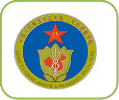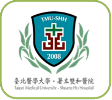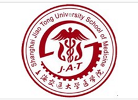Day 1 :
Keynote Forum
Alina Borkowska
Nicolaus Copernicus University in Toruń, Poland
Keynote: New technology in CNS rehabilitation (hyperbaric oxygen therapy + tele-rehabilitation)
Time : 09:30-10:10

Biography:
Alina Borkowska is Head and Chair of Clinical Neuropsychology Department in Collegium Medicum in Bydgoszcz, Nicolaus Copernicus University in Torun. Her research concerns on neurobiology and genetics of cognitive dysfunctions in psychiatric and neurological diseases, somatic illnesses and in patients after cardio-surgery and neurosurgery operations. She is a Head of numerous universities and national grants. She was awarded with national and international scientific awards. She is a member of Polish Psychiatric Association, European Psychiatrist Association and member of scientific board in numerous scientific journals. She is also Advisory Board Member of Polish Brain Committee. She was invited as a speaker on international conferences. She has published more than 400 papers in reputed journals with total IF=112.
Abstract:
Central Nervous System (CNS) dysfunctions with cognitive decline are considered as worldwide major problems. The etiology of brain impairment is various, e.g. traumatic brain injury, tumors, stroke, neurodegeneration, hypoxia, neurodevelopmental diseases, metabolic syndromes, psychiatric illnesses, and many others. The clinical manifestations of cognitive dysfunctions are related to the brain region, the specificity of lesions, abnormalities of neural synchronization, neurotransmitters, and also cognitive reserve and genes associated with cognitive abilities. Despite advances in medicine and rehabilitation, there is still no effective treatment to improve neural and functional recovery, however recent studies suggest that strategies focused on increase the effectiveness of neuroprotection may be considered as a most promising method in CNS therapy. Complex, more effective treatment of patients with brain dysfunctions should involve three levels of action: neuronal, functional and psychosocial. On neuronal level novel therapies are focused on elimination or minimalize of brain damaging agents like hypoxia, oxidative stress factors, inflammatory processes, edema (e.g., operative methods, novel pro-cognitive pharmacotherapy, hyperbaric oxygen therapy - HBOT), improvement of neuronal synchronization (e.g. transcranial brain stimulation). On functional level systematic neurorehabilitation involving movement, speech and neuropsychological rehabilitation taking into account the patient's neuropsychological and disability profile should be implemented. Improvement of psychosocial functioning may be obtain due to patients, family and society education, elimination of geographic barriers of availability to treatment, stimulate the patients social and work activity. Such expectations meets telemedicine rehabilitation, which is more effective, as it provides higher compliance: 20% hospitalized patients do not perform the recommended exercises and with tele-rehabilitation the percentage is reduced to 1%. Recently there is increased interest with IT solutions in neuropsychological rehabilitation, especially using task based on computed games rules, which increase patient motivation to the exercise. Telemedic solution will help patients perform prescribed exercises at home (at the time and place convenient for them). There will be also added effect of the exam situation that causes reduction of the patient’s reluctance to rehabilitation and non-cooperation. Promising for patients with CNS dysfunctions is complex treatment with “NEUROBARY” system, which is a combination of oxygen hyperbaric therapy and telemedic neurorehabilitation. COGTEL platform is also used to data recording, report generation, tele-visits, and educational panels. Patients, who were examined by us, after TBI and stroke received 30 HBOT sessions and telemedicine neurorehabilitation with monitoring of the effects and access to selected therapy methods from mobile equipment. Patients treated with this system showed significant improvement on cognition and social skills and revealed greater motivation to rehabilitation.
Keynote Forum
Alexander Melerzanov
Moscow Institute of Physics and Technology, Russia
Keynote: Translational medicine : Our approach
Time : 10:10-10:50

Biography:
Alexander Melerzanov graduated from Moscow Medical Academy with MD Degree in 1994 completed his PhD in 2010. He is a Dean of Biological and Medical Physics of Moscow Institute of Physics and Technology (top Russian technical university); holds positions of a Medical Director of a Life Science Center of MIPT and consulting physician for Hospital #1 of Presidential Affairs. He has published more than 20 papers in reputed journals and has been serving as an expert for medical education and preclinical trials commission of Ministry of Education and Science and as an expert for the Scientific council of MIPT
Abstract:
Usual perception of the translational medicine is based on OMICs technologies approach to the personalized medicine. In our center we make an attempt to expand the understanding of translational medicine towards mathematical modelling of circulatory system as another base for personalized treatment. Modern visualization means combined with effective algorithms of automated processing of diagnostics data allow construction of individual computational grids for surgery planning and treatment optimization. Development and implementation into clinical practice of devices with S C “hardware-software systems” minimizes diagnostic invasion by using math modelling of the blood stream and cardiac workload. This way we plan to achieve as better treatment outcome including surgery itself and follow up protocols and as a next step we see development of the individualized implanted devices based on stretchable electronics. For that work we have established a translational medicine department. Department consists of physicians and scientists joint by two leading Russian technical and medical universities [Moscow Institute of Physics and Technology (State Research University) and First Moscow State Medical University named after I M Sechenov respectively] and George Washington University. The plan of Ministry of Healthcare of Russian Federation is to establish a chain of translational medicine centers. We are the first one due to the fact the cardio-circulatory diseases are by far (58%) overcome all other reasons for mortality in Russia. Implementation of translational medicine into practical healthcare became possible after the new law acceptance. New law allows medical professionals to apply novel scientific approaches to practice based on the decision of the ethic committee with funding from the Ministry of Healthcare. New approach will change the existing approach to interventional angiology and will have a pronounced medical care quality improvement; so an economical effect.rn
- Track-4 Translational Therapeutics and Technologies
Track-5 Translational Modelling of Efficacy and Safety
Track-8 Clinical and Translational Oncology
Track-9 Immunology and Infectious Diseases
Session Introduction
Sergey Suchkov
A.I.Evdokimov Moscow State University of Medicine and Dentistry, Russia
Title: Antibody-proteases as promising tools of novel generation to be translated into clinical practice for having multistep (subclinical and clinical) demyelination monitoring secured
Time : 11:10-11:35

Biography:
Sergey Suchkov was born in 11.01.1957, a researcher-immunologist, a clinician, graduated from Astrakhan State Medical University, Russia, in 1980. He has been trained at the Institute for Medical Enzymology, The USSR Academy of Medical Sciences,National Center for Immunology (Russia), NIH, Bethesda, USA) and British Society for Immunology to cover 4 British university facilities. Since 2005, he has been working as Faculty Professor of I.M. Sechenov First Moscow State Medical University and Of A.I.Evdokimov Moscow State Medical & Dental University. From 2007, he is the First Vice-President and Dean of the School of PPPM Politics and Management of the University of World Politics and Law.In 1991-1995, He was a Scientific Secretary-in-Chief of the Editorial Board of the International Journal “Biomedical Science” (Russian Academy of Sciences and Royal Society of Chemistry, UK) and The International Publishing Bureau at the Presidium of the Russian Academy of Sciences. In 1995-2005, he was a Director of the Russian-American Program in Immunology of the Eye Diseases. He is a member of EPMA (European Association of Predictive, Preventive and Personalized Medicine, Brussels-Bonn), a member of the NY Academy of Sciences, a member of the Editorial Boards for Open Journal of Immunology and others. He is known as an author of the Concept of post-infectious clinical and immunological syndrome, co-author of a concept of abzymes and their impact into the pathogenesis of auto immunity conditions, and as one of the pioneers in promoting the Concept of PPPM into a practical branch of health services.
Abstract:
Among the best-validated proteome-related predictive biomarkers, antibodies (Abs) are the best known. A combination of different panels of autoAbs in the diagnostic practice is becoming of great significance to predict risks of chronization of the autoimmune disorder since most of the latter are preceded by a long subclinical (symptom-free) phase when the patients or persons-at-risk could be identified via specific sets of autoAbs. Of particular interest would be algorithms which would employ panels of targeted Abs for screening patients and their relatives at risks for the presence of preclinical (lab proof-based) signs and for thus having the data translated into the daily practice. Abs against myelin basic protein/MBP endowing with targeted and highly specific proteolytic activity (Ab-proteases) are appearing to be of great value to monitor demyelination at either of the stages. The activity of Ab-proteases identified and purified from MS blood samples markedly differed between: (i) MS patients and healthy controls; (ii) different MS courses; (iii) EDSS scales of demyelination to correlate with the disability of MS patients to predict transformations prior to changes of the clinical course. The sequence-specificity of Ab-proteases demonstrates five sites of preferential proteolysis to be located within the immunodominant region of MBP. The activity of Ab-proteases was first registered at the subclinical stages. About 24% of the direct MS-related relatives were seropositive for low-active Ab-proteases from which 50% of the seropositive relatives monitored for 2 years have been demonstrating stable growth of the proteolytic activity. And, finally, primary clinical manifestations observed were coincided with the activity to have its mid-level reahced. The activity of Ab-proteases in combination with their sequence-specificity to attack well-defined epitopes to be released from MBP during epitope spreading, would confirm a practical value of Ab-proteases demonstrating their unique functionality. Meanwhile, Ab-proteases can be programmed and reprogrammed to suit complex cell biochemistry. And thus two logical questions would arise: (i) would the original potential for the Ab-mediated proteolysis relate to natural Ab-related function? (ii) could that potential be translated into the clinical practice to suit the need of clinicians? Canonical Abs play neither predictive nor discriminative role to affect the subclinical stage of MS. Meanwhile, sequence-specific Ab-proteases have proved to be greatly informative and thus valuable as translational biomarkers to monitor MS at both subclinical and clinical stages. So, the activity in combination with the sequence-specificity would confirm a high subclinical and predictive value of Ab-proteases as applicable for personalized monitoring protocols. Moreover, of tremendous value in this sense are Ab-proteases directly affecting the physiologic remodeling of tissues with multilevel architectonics (for instance, myelin). So, targeted Ab-mediated proteolysis could be also applied to isolate from Ig molecules catalytic domains directed against encephalitogenic epitopes or domains containing segments to exert proteolytic activity. And further studies on Ab-mediated MBP degradation and other targeted Ab-mediated proteolysis may provide biomarkers of new generations and thus a supplementary tool for assessing the disease progression and predicting disability of the patients and persons-at-risks. The latter means that translation of the data collected on targeted Ab-mediated proteolysis may provide a supplementary tool for predicting demyelination and thus the disability of the MS patients.
Isabelle De Waziers
INSERM U1147, France
Title: Use of engineered mesenchymal stem cells against cancers
Time : 11:35-12:00

Biography:
She has completed her Ph.d in Molecular Pharmacology, Experimental Pharmacology and Metabolism, Physiology of Nutrition. She is the member of administration council of the Faculty of Medicine in Paris Descartes University, member of the American Association for Cancer Research. She has been appointed as the Mayor of Lignières en Vimeu from 1995, President of the Community of Communes of the Region of Oisemont from 2014,Departemental councilor from 2014. Her special area or research are Xenobiotic metabolism, Toxicology, Molecular Biology, Cancer, Resistance to chemotherapy, Gene therapy, Transcriptomic, Metabonomic.
Abstract:
Gene-Directed Enzyme Pro-Drug Therapy (GDEPT) consists in expression of a suicide gene in tumor cells allowing in situ conversion of the pro-drug into cytotoxic metabolites. In a previous work, we demonstrated that the combination of a mutant CYP2B6 with NADPH Cytochrome P450 reductase (CYP2B6TM-RED), as a suicide gene, and Cyclophosphamide (CPA) might constitute a powerful treatment for solid tumors (Touati et al, Curr Gene Ther, 2014). The efficiency of this combination was mainly due to i) an optimized suicide gene able to metabolize efficiently CPA ii) an efficient bystander effect, iii) the development of an antitumor immune response. Major impediments were the targeting of the suicide gene specifically to the tumor cells and its low expression into tumor cells. Recently, therapies based on genetically engineered Mesenchymal Stem Cells (MSCs) expressing suicide gene have received a great deal of attention because of their therapeutic potential to treat solid tumors (Kosaka et al, Cancer Gene Ther, 2012). Indeed, MSCs possess an extraordinary ability to home into tumors due to the inflammatory mediators which are found at the site of a tumor. MSCs can be easily isolated, from tissues such as bone marrow (BM-MSCs) and adipose tissue (ACS), expanded in culture and efficiently transduced with recombinant viral vectors leading to important and stable expression of the suicide gene. Once the transduction is performed, the most efficient clone for bioactivation of the prodrug can be selected and used for several patients. Indeed, given the minimal expression of the major histocompatibility complex MHC-I and MHC-II, allogeneic expanded Adipose-derived Stem Cells (eASC) delivered locally are well-tolerated and currently in clinical Phase III clinical trials for the treatment of inflammatory and auto-immune diseases (www.tigenix.com). Murine MSCs were genetically engineered ex-vivo to stably express luciferase or CYP2B6TM-RED. The most efficient clones were selected. MSCs expressing luciferase were used to follow the future of MSCs after their intratumoral injections in animal models. MSCs expressing CYP2B6TM-RED were used to check ex vivo and in vivo their efficiency to bioactivate CPA and destroy neighboring tumor cells through a by-stander effect. Intratumoral injections of CYP2B6TM-RED-MSCs and CPA allowed a complete eradication of the tumor in 33% of the mice without any recurrence four months later. Different experiments are now under investigation to improve the efficiency of this strategy.
Sevtap Savas
University of Newfondland, Canada
Title: Identification of genetic variations associated with outcome risk in colorectal cancer: Where are we now?
Time : 12:00-12:25

Biography:
Sevtap Savas obtained her PhD in Molecular Biology and Genetics from the Bogazici University, Turkey. She trained as a post-doctoral fellow or research associate in Louisiana State University (USA), Mount Sinai Hospital Research Institute (Canada) and Princess Margaret Hospital/Ontario Cancer Institute (Canada). Since 2008, she has been a faculty member at Discipline of Genetics, Memorial University of Newfoundland (Canada). Her research program focuses on genetic prognostic studies in colorectal cancer using genetic, epidemiological, biostatistical, and computational approaches as well as development of public databases. She also serves as a reviewer, academic editor or editorial board member for several journals.
Abstract:
My laboratory is interested in identifying genetic markers that can help predict the patient outcomes in colorectal cancer. For this purpose, associations of genetic variations, such as SNPs (Single Nucleotide Polymorphisms) and CNVs (Copy Number Variations), with patient survival times are investigated using statistical methods. In collaboration with the investigators at the Newfoundland Colorectal Cancer Registry (NFCCR) and other institutions, my laboratory conducted a number of candidate gene, candidate pathway, and genome wide prognostic studies in colorectal cancer. In this presentation, results of select projects will be discussed.
Jan Scicinski
EpicentRx Inc , Mexico
Title: RRx-001, a novel ROS-mediated epigenetic modulator: ‘Episensitization’ to previously failed therapies
Time : 12:25-12:50 PM

Biography:
Dr Scicinski has 30 years experience in the pharmaceutical and biotech industries in drug discovery and development. He is Senior VP & Chief Scientific Officer at EpicentRx, Inc leading drug discovery, basic research and preclinical development efforts. He oversees regulatory affairs, CMC and QA. Prior to EpicentRx, Dr Scicinski held leadership positions in research on drug delivery and discovery at DURECT and ALZA and in drug discovery and chemical technology at Nuada and GSK. Dr Scicinski holds a BSc from Imperial College, London and a PhD from Cambridge University and has co-authored over 90 peer-reviewed publications, abstracts and book chapters.
Abstract:
Acquired resistance to chemotherapies in cancer results in early disease progression that translates to lower survival. Resensitization of tumors to previously effective but now failed therapies is an established paradigm in ovarian cancer, which could be expanded to include other solid tumors, such as colorectal, NSCLC, SCLC and cholangiocarcinoma, leading to across-the-board improvements in patient survival and radiologic response. Although epigenetic agents hold the promise of priming tumors to subsequent chemotherapy, many agents are too toxic for chronic use. RRx-001, a novel ROS-mediated epigenetic modulator with activity against DNMTs and HDACs, is systemically non-toxic, with improvements in QOL observed in clinical trials making it an ideal candidate for ‘episensitization’ applications. RRx-001 resensitization was observed in Phase 1 and is being investigated in multiple Phase 2 studies: “ROCKET” is a two stage clinical study in metastatic colorectal cancer investigating resensitization to irinotecan-based therapies. Patients who previously responded, then progressed on irinotecan-based therapies are randomized to receive RRx-001 (1x week) or regorafenib (target ~190 pts) until progression or unacceptable toxicity (Stage 1). Patients then receive irinotecan-based therapies (Stage 2). The primary endpoint is overall survival with secondary endpoints to investigate resensitization. The trial is continuing. RRx-001 patients entering Stage 2 are showing improving survival, marked CEA decreases and radiological responses. In contrast, regorafenib patients eligible for stage 2 were too systemically unwell to proceed. Early results suggest that RRx-001 may resensitize patients to irinotecan-based therapies and appear to be generalized, potentially translating to increased overall survival.
Eli Raveh
The Hebrew University of Jerusalem, Israel
Title: From chromosomal instability to metastases- H19’s role in cancer progression and its clinical significance
Time : 13:50-14:15
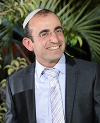
Biography:
Eli Raveh earned his PhD in developmental biology from the Hebrew University of Jerusalem (HUJI) in 2011, specializing in hair and skin development. Since then he serves as a research assistant in Prof. Avraham Hochberg’s Laboratory,at the department of biological chemistry, HUJI, which focuses on cancer therapy research based on the H19 gene involvement in cancer.
Abstract:
The oncofetal H19 long non-coding RNA (lncRNA) is normally expressed in the embryo and downregulated at birth; however its expression is re-elicited in Human tumors of almost every type. Accumulating data by us and others consolidate into a paradigm according to which H19 is in the center of a mammalian “selfish survival pathway” activated by the cancerous cell in order to cope with stress conditions. P53 nullification or dysfunction, hypoxia, serum starvation, chemotherapy and other stress inducers upregulate H19 expression. H19 in turn supports tumor growth and enhances proliferation in response to hypoxia and p53 mutations. We have also recently proven that H19 RNA significantly contributes to Epithelial to Mesenchymal Transition (EMT), a process which is known to emerge as a response to a multitude of stress conditions. Surprisingly, studies indicate that H19 is involved also in the further, apparently converse steps of mesenchymal to epithelial transition to support colonization and proliferation in the secondary tumor site. In view of the paradigm suggested above, H19’s unique expression in cancers, and the active involvement of H19 in almost every deleterious aspect of cancer progression, H19 should serve as a state of the art target for highly selective cancer therapy. Indeed, we currently use a DNA-plasmid based drug that harnesses H19 regulatory elements to drive the expression of Diphtheria toxin - a translational regulated therapy designed to selectively kill cancer cells with no “collateral damage” to the healthy surrounding tissues. We will comprehensively review recent studies by us and others that align with our paradigm, and demonstrate how understanding of H19 expression and biology is translated into promising results in bladder, pancreas and ovarian cancer clinical trials.
Suoqin Tang
PLA General Hospital, China
Title: Survivin siRNA nano particles are capable of inhibiting cancer cell growth both in vitro and in vivo
Time : 14:15-14:40

Biography:
Suoqin Tang has completed his MD at the age of 23 years from The Fourth Medical University in China and postdoctoral studies from University of Southern California School of Medicine. He is chief physician and professor of Department of Pediatrics, Chinese PLA General Hospital, a famous and one of the best hospitals in China. He has published more than 65 papers both in China and overseas. He is an international member of Childrens Oncology Group(US), standing member of Chinese Pediatric Society, and editor of Chinese Journal of Pediatrics. He is doing clinical work on chemotherapy of leukemia and solid tumors, including lymphoma, neuroblastoma and PNET, his research work focus on target therapy of cancer.
Abstract:
Since the stability of siRNA molecules in the blood and efficiency of siRNA delivery into target organs or tissues following systemic administration have been the major issues that limit applications of siRNA in human patients, we try to explore if siRNA liposome entrapment works in the development of novel therapeutics. Our study aims to evaluate the therapeutic effect of survivin siRNA nano particles, on liver cancer, colon cancer and cervical cancer both in vitro and in vivo. First, sequences of survivin siRNA we designed had been screened for their efficacy, and the most effective one was chosen for the next study. Second, we have tested the biological effect of survivin siRNA nanoparticles on cancer cell lines in vitro, and resulted that, the survivin mRNA and its protein expression was significantly inhibited in MHCC-97H cells, HeLa cells and LoVo cells, also proliferation of those cell lines was inhibited and apoptosis was promoted. Third, subcutaneous xenograft Balb/c nude mice of MHCC-97H cells, HeLa cells or LoVo cells were established. Survivin siRNA nanoparticles(70.7±29.077nm in size), with dosage of 3 mg/kg survivin siRNA was given via local or intravenous injection, twice a week continuously for 4 weeks. As results, significant tumor growth inhibition both in local injection and venous injection was observed, compared to control mice who received scribbled siRNA nan particles at the same dosage, with inhibition rate of 32.22% and 36.67%, at the end of study in venous injection and local injection respectively, the relative tumor volume in mice with local injection showed significant less than control group from 10 days after first injection((P<0.05), till 31 days, it was also the same situation in mice with venous injection compared to control, (P<0.05) except day 17, survivin mRNA and its protein were down regulated at the end of study, compared to control group. Our study also showed some inhibition activity of survivin siRNA nanoparticles in subcutaneous xenograft Balb/c nude mice of HeLa or LoVo cells, survivin mRNA and protein expression was all down regulated in tumor tissue compared to control. We labeled the survivin siRNA with Cy3 florescence and intravenous injection to nude mice with MHCC-97H cells, and found intense Cy3 distribution in tumor mass, liver and spleen, but scant distribution in heart, brain, lung, bone marrow and gastrointestinal tract. Our study revealed that survivin siRNA nanoparticles were capable of inhibiting tumor growth both in vitro and in vivo.
Huiyun Zhang
Liaoning Medical University, China
Title: Subsets of regulatory T cells and their roles in allergy
Time : 14:40-15:05

Biography:
Huiyun Zhang has completed her PhD at the age of 36 years from Shantou University Medical College and postdoctoral studies from MacMaster University School of Medicine. She is the director of pathophysiology Department to Liaoning Medical University. She has published more than 50 research articles including 22 recorded in Scientific Citation Index and has been serving as an editorial board member for several Journals. Her research interest is to explore the diagnostic and therapeutic procedures based on the pathophysiology of allergy. Accordingly, she has obtained 3 National Natural Science Foundation of China (No. 81030054, 81241135, 81472016) and 1 Key Provincial Health Project. And she has participating in 2 Major State Basic Research Program of China (973 Program, No. 2013CB530500&2007CB512400) and 1 national sci-tech support plan (2014BAI07B02) as well as editing “Theoretical Allergology ”, “Experimental Allergology”, “Clinical Allergology”, “Allergology in Ear Nose Throat Head and Neck Diseases” and “Frontier Progress in Immunology” a total of five books on Allergology and Immunology in Chinese
Abstract:
In recent years, it is recognized that acquired immunity is controlled by regulatory T cell (Treg). Since fundamental pathophysiological changes of allergy are mainly caused by hyperresponsiveness of immune system to allergens that acquires after birth, Tregs likely play key roles in the pathogenesis of allergy, particularly during the sensitization phase. However, accumulated information indicate that there are several distinctive subtypes of Tregs in man, and each of them seems to play different role in controlling immune system, which complicates the involvement of Tregs in allergy. The aim of the present study is to attempt to classify subtypes of Tregs and summarize their roles in allergy. Tregs should include natural Tregs (nTreg) including inducible costimulator (ICOS)(+) Tregs, inducible/adaptive Tregs (iTreg), interleukin (IL)-10-producing type 1 Tregs (Tr1 cells), CD8(+) Tregs and IL-17-producing Tregs. These cells share some common features including expression of Foxp3 (except for Tr1 cells), and secretion of inhibitory cytokine IL-10 and/or TGF-ï¢. Furthermore, it is noticeable that Tregs likely contribute to allergic disorders such as dermatitis and airway inflammation, and play a crucial role in the treatment of allergy through their actions on suppression of effector T cells and inhibition of activation of mast cells and basophils. Modulation of functions of Tregs may provide a novel strategy to prevent and treat allergic diseases.
Geeta Shroff
Nutech Mediworld, India
Title: Validating the efficacy of the Human Embryonic Stem Cell (hESC) therapy in cerebral palsy patients

Biography:
A graduate in medicine from the University of Delhi, Dr. Shroff did her post graduation in Gynecology & Obstetrics. She is specialized in treating infertility, and is a trained embryologist and a qualified IVF practitioner. After gaining 8 years of valuable clinical experience at Safdarjung Hospital & Batra Hospital, Dr. Shroff set up her own IVF practice in 1996. She began research on human embryonic stem cells in 1999, and pioneered human embryonic stem cell therapy. Since 2002, Dr. Shroff has treated more than 1300 patients suffering from various conditions-Spinal cord injuries, Diabetes, Multiple sclerosis, Parkinson’s disease, Cardiac conditions, Cerebral palsy.
Abstract:
Introduction: We have previously shown that hESCs have the potential to treat Cerebral Palsy (CP) related neurological impairments. Here, we focus on the validation of efficacy of hESC therapy in patients with CP. Methodology: This was a record based study (October 2007 to July 2013) of 101 CP patients (age <54 years). hESCs were given in four treatment sessions (T1- T4). The variables “ILLNESS” (How ill at start) and “EMENDMENT” (How emended at end of session) were analyzed. Results: Of 101 patients, 73 attended T2, 41 attended T3 and 15 attended T4. For T1, the average duration of therapy (TD 1) was 60 days. At the end of T1, patients had improved by ~180% from baseline. Similarly, for T2, T3 and T4 (TD 2, 3 = 59 days; TD 4 = 60 days), an improvement by 162%, 153% and 170%, respectively from end of previous session was noted. During T1, T2, T3 and T4 the “ILL” patients, who were ‘severe’ (53, 36, 20, and 6) at admission, emended as endured (40, 28, 17, and 5) and profuse (13, 8, 3, and 1) at discharge. Moderate “ILL” patients (48, 48, 2, and 9) at admission emended as “profuse” (36, 28, 17, and 7) and “endured” (12, 9, 4, and 2) at discharge. For severe cases at admission, the odds of profuse emending when therapy ended were 0.11, 0.09, 0.75, and 0.04 times lower than the cases that were moderate at admission. Conclusion: hESCs therapy caused betterment in the condition of CP patients compared to first admission during each session.
Chi-Tai Yeh
Taipei Medical University, Taiwan
Title: Potential clinical application of PG2 (Astragalus polysaccharide) in cancer-related fatigue and immune modulation
Time : 15:50-16:15

Biography:
Chi-Tai Yeh received his Ph.D. in Food Science and Biotechnology from National Chung Hsing University. Dr. Yeh is currently the Research Fellow in the Graduate Institute of Clinical Medicine at the Taipei Medical University. He is also the Deputy Director of Department of Research and Education of Taipei Medical University-Shuang Ho Hospital. Dr. Yeh has contributed 2 book chapters, published 45 articles in the field of cancer & nutritional chemistry journal, and got 5 patents in the medical compound of cancer therapy. His major research interests include in cancer cell biology, cancer stem cell research, nutrigenomis and cancer chemoprevention with dietary phytochemicals.
Abstract:
A major complaint (>90%) amongst cancer patients undergoing chemotherapy is fatigue, and it remains an unmet medical challenge. Cancer-Related Fatigue (CRF) is well defined in the 10th revision of the International Statistical Classification of Diseases and Related Health Problems (ICD-10). Coupled with the limited understanding of the etiological basis of CRF, current treatment options, such as psycho-stimulants and hematopoietic agents, are ineffective. However, there is increasing recognition of the role of inflammatory cytokines, especially IL-6 and TNF-alpha on CRF pathogenesis. . The prevailing model of cancer treatments often results in the dysregulation of the immune system, which in turn negatively modulate the Central Nervous System (CNS). Traditional Chinese Medicine (TCM) has a long history of treating patients who suffer from deficient ‘qi’ and blood, as well as imbalance of ‘yin’ and ‘yang’. Interestingly, modern science now recognizes the immune modulating activity of many TCM compounds. PG2, a highly purified polysaccharide portion of Astragalus membranaceus, activates immune cells and influences the cytokine network. A pivotal randomized, double-blind, placebo-controlled clinical trial investigated the therapeutic efficacy of PG2 for CRF treatment in advance cancer patients, and found that PG2 significantly alleviated CRF: 82% of the patients had reduced fatigue symptoms after the first PG2 cycle. Thus, PG2 appears to be an effective treatment for CRF. For the indication of CRF in palliative care, PG2 was TFDA-approved for commercial distribution in Taiwan since 2010. The present study focuses on PG2’s immune-modulating function, such as its effect on inflammation and the tumor microenvironment. Tumor-Associated Macrophage (TAM) plays a crucial role in tumor growth, progression and metastasis, and is a target for TCMs such as PG2. Furthermore, we have established an algorithm for early detection of CRF and its accurate diagnosis, based on the correlation of several cytokine biomarkers and CRF questionnaires.. In conclusion, it is anticipated that our work will further shatter the myth of the therapeutic intractability of CRF and push the limits of integrative medical care.

Biography:
Wei-Dong Han, MD, PhD, is the Director of Department of Molecular Immunology/Bio-therapeutic, Director of Department of Stem Cell and Tissue Regeneration in Chinese PLA General Hospital. He is a pioneer in the field of tumor immunotherapy, initially developed the clinical translation of chimeric antigen receptor T (CART) cells in China. He holds 10 projects of clinical trial, including 8 registered CART-based trials (CART19, CART20, CART30, CART33, CART-EGFR, CART-HER-2, and CART-138). The corresponding patents were also applied or obtained in China. In recent 10 years, he obtained 9 grants in China and published more than 80 papers in international journals.
Abstract:
Patients with relapsed or refractory Non-Hodgkin lymphoma (NHL) have a dismal prognosis. Chimeric antigen receptor (CAR) modified T cells targeting CD20 have shown activity in phase I clinical trial for patients with advanced B-cell lymphomas. We performed a phase IIa trial to further assess the safety and efficacy of administering autologous anti-CD20 CAR T (CART-20) cells to patients with refractory or relapsed CD20+ B-cell lymphoma. Eleven patients including one with previous auto-HSCT and one primary cutaneous B-cell lymphomas were enrolled. Seven patients underwent cytoreductive chemotherapy for tumor debulking and lymphocyte depletion before T cell infusions. CART-20 cells were infused into patients at doses of 2.8 to 14.6×106 cells/kg. The overall objective response rate was 9 of 11 (81%), with 6 complete remissions (CR) and 3 partial remissions (PR); no severe toxicity was observed. The median PFS had lasted for more than 10 months with 1 maintaining for 25-month continuous CR. A significant inverse correlation between the molecule levels of the CAR gene and disease recurrence or progression was observed. Additionally, it was deservered to be addressed clinically that the lesions in some special sites such as in spleen and testicle were refractory to CART-20 treatment.
Kuo-Hsiang Chuang
Taipei Medical University, Taiwan
Title: Expressing membrane antibody reporter in the islet cells of nonobese diabetic mice to noninvasive image the disease progression of autoimmune diabetes
Time : 16:40-17:05

Biography:
Dr. Kuo-Hsiang Chuang completed his Ph.D. degree in biomedicine at Kaohsiung Medical University, Taiwan, in 2010. From March 2010 to January 2012, he joined Professor Tian-Lu Cheng’s group (Kaohsiung Medical University) as a Postdoctoral Fellow to study protein engineering, including the development of humanized antibodies and novel recombinant protein drugs. In February 2012, He became an assistant professor in Graduate Institute of Pharmacognosy, Taipei Medical University, Taiwan. Now, he focuses on several research fields, including: reporter genes/noninvasive imaging systems, protein engineering, immunotherapy, and type 1 diabetes.
Abstract:
Expressing a reporter gene in the pancreatic islet of Non-Obese Diabetic mice (NOD mice) allows researchers real-time monitoring the processes of islet loss by noninvasive imaging systems, overcoming the defect of traditional method in which researchers need to weekly sacrifice lots of NOD mice to observe the insulitis in pancreatic islet section.Toward achieving this aim, we previously developed a murine anti-Polyethylene Glycol antibody receptor (anti-PEG reporter) which can be stably expressed on cell surface and can selectively trap PEGylated imaging probes (PEG-NIR797, PEG-124I, and PEG-SPIO) to assess the delivery of cells in vivo by different imaging systems (optical imaging, micro-PET, and MRI). Currently, we have successfully developed the NOD/pIns-αPEG mice which stably express the anti-PEG reporter in their pancreatic islets by using an insulin promoter.The PEG-NIR797 fluorescent probe can specifically accumulate at the pancreatic islet region of NOD/pIns-αPEG mice but not control NOD mice, assisting researchers in conveniently and accurately tracing the process of islet loss and further investigating the islet-protective effects of drugs or genes by optical imaging system.Importantly, expressing the anti-PEG reporter in the pancreatic islet of NOD/pIns-αPEG mice does not affect the islet size, insulin secretion, and the disease progression of type 1 diabetes. The NOD/pIns-αPEG mice may help researchers easily tracing the disease progression of type1 diabetes by noninvasive imaging systems, further providing a valuable tool for worldwide pharmaceutical companies and drug research institutes to screen and evaluate the diabetes drugs.
Solomon Umukoro
University of Ibadan, Nigeria
Title: Mechanisms involved in memory promoting effect of Jobelyn® in mice exposed to unpredictable chronic mild stress

Biography:
Umukoro S has completed his PhD from University of Lagos, Nigeria. He is the Chairman of Central Animal House, University of Ibadan, Ibadan. He has published more than 35 papers in reputed journals and has been serving as a resource person for both local and international journals.
Abstract:
This study was designed to evaluate the possible mechanism (s) involved in memory promoting effect of Jobelyn® in mice exposed to unpredictable chronic mild stress (UCMS). Male Swiss mice were given JB (5-25 mg/kg, p.o) 30 min before exposure to UCMS for 14 days before testing for memory function. Serum corticosterone level was estimated using ELISA kits while the levels of malondialdehyde and glutathione as well as acetylcholine esterase activity in the brain homogenate were determined spectrophotometrically. Histology of the brain tissues and estimation of the populations of viable neurons in the hippocampal regions were done after staining with hematoxyline and eosin. JB reversed memory impairment and also decreased serum corticosterone level produced by UCMS (p<0.05). Moreover, JB reduced malondialdehyde levels and elevated the concentrations of glutathione in the brain of mice exposed to UCMS. Also, JB decreased brain acetylcholine esterase activity when compared with chronic stress group (p<0.05). JB offered a significant protection against UCMS-induced degeneration and death of neuronal cells of the Cornu Ammonis (CA3) of the hippocampus region of the brain suggesting neuro-protection. These findings suggest that Jobelyn® attenuated memory deficits induced by UCMS in mice and may be useful therapeutically for the treatment of stress-related cognitive dysfunctions. The antioxidant, anti-cholinesterase and neuroprotective activities demonstrated by Jobelyn® may be playing a significant role in its memory promoting effect in mice exposed to unpredictable chronic mild stress. The reduction in serum corticosterone, a major indicator of stress response further supports its usefulness in stress-related disorders. The adaptogenic-like activity of MJ may be related to the modulation of serum corticosterone levels, inhibition of anti-choline esterasoxidative stress and neuro-protective effect.
Solomon Umukoro
University of Ibadan, Nigeria
Title: Mechanisms involved in memory promoting effect of Jobelyn® in mice exposed to unpredictable chronic mild stress

Biography:
Umukoro S has completed his PhD from University of Lagos, Nigeria. He is the Chairman of Central Animal House, University of Ibadan, Ibadan. He has published more than 35 papers in reputed journals and has been serving as a resource person for both local and international journals.
Abstract:
This study was designed to evaluate the possible mechanism (s) involved in memory promoting effect of Jobelyn® in mice exposed to unpredictable chronic mild stress (UCMS). Male Swiss mice were given JB (5-25 mg/kg, p.o) 30 min before exposure to UCMS for 14 days before testing for memory function. Serum corticosterone level was estimated using ELISA kits while the levels of malondialdehyde and glutathione as well as acetylcholine esterase activity in the brain homogenate were determined spectrophotometrically. Histology of the brain tissues and estimation of the populations of viable neurons in the hippocampal regions were done after staining with hematoxyline and eosin. JB reversed memory impairment and also decreased serum corticosterone level produced by UCMS (p<0.05). Moreover, JB reduced malondialdehyde levels and elevated the concentrations of glutathione in the brain of mice exposed to UCMS. Also, JB decreased brain acetylcholine esterase activity when compared with chronic stress group (p<0.05). JB offered a significant protection against UCMS-induced degeneration and death of neuronal cells of the Cornu Ammonis (CA3) of the hippocampus region of the brain suggesting neuro-protection. These findings suggest that Jobelyn® attenuated memory deficits induced by UCMS in mice and may be useful therapeutically for the treatment of stress-related cognitive dysfunctions. The antioxidant, anti-cholinesterase and neuroprotective activities demonstrated by Jobelyn® may be playing a significant role in its memory promoting effect in mice exposed to unpredictable chronic mild stress. The reduction in serum corticosterone, a major indicator of stress response further supports its usefulness in stress-related disorders. The adaptogenic-like activity of MJ may be related to the modulation of serum corticosterone levels, inhibition of anti-choline esterasoxidative stress and neuro-protective effect.
Osama Rahma
University of Virginia, USA
Title: Harnessing the immune microenvironment of gastrointestinal cancers using combined modalities

Biography:
Osama Rahma has completed his MD from Damascus University and Internal Medicine Residency from East Carolina University. He completed a fellowship in Immunotherapy and Medical oncology from the Vaccine Branch and the Medical oncology Branch at the National Cancer Institute. He is currently the leader of the hepatobiliary and pancreatic cancer program at University of Virginia. Dr. Rahma is a Principal Investigator on few multicenter clinical trials in pancreatic cancer and has published more than 15 papers in reputed journals.
Abstract:
Immunotherapy has recently emerged as a promising modality in cancer treatment leading to the approval of immune checkpoint inhibitors in few malignancies including melanoma and lung cancer. Tumor-Infiltrating Lymphocytes (TILs) play a major role in anti-tumor immune responses, and their presence is correlated with survival in a variety of tumors. However, These TILs do not reach the Pancreatic Cancer (PC) cells in significant numbers due to the presence of stroma and suppressive microenvironment. In addition, some Colorectal Cancers (CRC) have low immune scores, recently described by Galon et al to assess the presence of TILs in CRC. Furthermore, one of the leading causes for immune suppression is elevated expression of PD-L1 either by the tumor cells or the surrounding regulatory cells, resulting in dysfunction of TILs. There is recent evidence to suggest that Chemoradiation Therapy (CRT) can increase the presence of TILs in the PC and CRC microenvironment, leading to production of Interferon-γ (IFN-γ), which could increase the expression of PD-L1 through a negative feedback loop. We are currently investigating the combination of anti-PD-1 inhibitor (Pembrolizumab) and CRT in patients with pancreatic cancer and rectal cancer. Testing this combined modality in the neoadjuvant setting will allow us to study the safety of this approach and its effect on the tumor microenvironment by comparing TILs and other effector (NK, macrophages) and suppressor immune cells (T-regs, MDSCs) and receptors (PD-L1, CTLA-4) pre- and post- treatment. Finally, we will study the correlation between these immune biomarkers and clinical outcomes.

Biography:
Michael N. Liebman, Ph.D. is the Managing Director of IPQ Analytics, LLC and Strategic Medicine, Inc after serving as the Executive Director of the Windber Research Institute from 2003-2007. He is an Adjunct Professor of Pharmacology and Physiology at Drexel College of Medicine and Adjunct Professor of Drug Discovery, First Hospital of Wenzhou Medical University. Previously, he was Director, Computational Biology and Biomedical Informatics, University of Pennsylvania Cancer Center 2000-2003. He served as Global Head of Computational Genomics, Roche Pharmaceuticals and Director, Bioinformatics and Pharmacogenomics, Wyeth Pharmaceuticals, Director of Genomics for Vysis, Inc. He is a co-founder of Prosanos, Inc (2000). He was on the faculty of Mount Sinai School of Medicine in Pharmacology and Physiology/Biophysics. He serves on 14 scientific advisory boards and is on the Board of Directors of the Nathaniel Adamczyk Foundation for Pediatric ARDS and is an Advisor to the American Heart Association Science and Technology Accelerator. Michael is Chair of the Informatics Program of the PhRMA Foundation and also Chair of its program in Translational Medicine and Therapeutics and a member of the PhRMA Scientific Advisory Board. He is on the Advisory Board of the International Society for Translational Medicine and on the Editorial Board for the Journal of Translational Medicine, for Clinical and Translational Medicine and for Molecular Medicine and Therapeutics and the International Park for Translational Biomedicine (Shanghai). He is an Invited Professor at the Shanghai Center for Bioinformatics Technology. His research focuses on computational models of disease progression stressing risk detection, disease process and pathway modeling patient and disease stratification, and analysis of lifestyle interactions and causal biomarker discovery and focuses on moving bedside problems into the research laboratory to improve patient care and quality of life.
Abstract:
A growing gap exists between the generation of (big) data and conversion into information, knowledge and eventually clinical utility. Both the available data and the size of this gap are growing exponentially with the access to enhanced technologies, genome sequencing and electronic patient records. Although the emphasis has been on data generation, the missing link to close this gap remains understanding the true issues of unmet clinical need. It is essential to understand, represent and model the complexities of the entire healthcare ecosystem, including patient, physician, payer and pharma, to understand the difference between good research and the generation of clinical and commercial value. We have developed a comprehensive model of the full disease process and apply it across disease areas to understand where gaps exist, how to prioritize research and identification and evaluation of risks and opportunities. Application in breast cancer and ARDS will be presented.

Biography:
Dr. Aurea M. Flores graduated with a BS in Pharmacy from the University of Puerto Rico. She was awarded a PhD in Pharmacology and Toxicology from Purdue University in West Lafayette, Indiana, USA. Dr. Flores completed a post-Ââ€doctoral fellowship in molecular oncology at the H. Lee Moffitt Cancer Center and Research Institute in Tampa, Florida, USA. She then joined the University of Miami Sylvester Comprehensive Cancer Center where she established the Phase I Clinical Trials Program at Sylvester. In 2014 Dr. Flores founded ClinRes Experts, LLC, a clinical research consulting company, where she is currently president and CEO.
Abstract:
The identification of biomarkers used in the prognosis and development of cancer therapy has dramatically changed the way clinical research in oncology is conducted. Cancer is a heterogeneous group of diseases which main commonality is deregulated cell function. At the center of this deregulation are many mechanisms which are dependent on specific genetic features. The genesis and progression of cancer is complex and distinct even within the same cancer diagnosis. Treatment paradigms have evolved in time as translational science has elucidated and describe a large number of genetic biomarkers. The identification of biomarkers in the treatment of cancer has changed drug development dramatically in the last decade. For instance, the discovery of the epidermal growth factor family, including EGFR and Her2/neu, led the path for a new paradigm in the treatment of breast and lung cancer as well as the development of targeted therapies for these and other cancers. The discovery and elucidation of the expression of the Philadelphia chromosome in chronic myelogenous leukemia led to the development of imatinib followed by several analogs which are currently in the market. Differential biomarker expression in lymphomas and leukemias assists clinicians in better understanding the prognosis of disease as well as treatment. However, biomarker expression has not always been straightforward. Ras targeted therapies have been disappointing. Ras expression in colorectal cancer has been shown to confer resistance to EGFR-Ââ€expression, while EGFR expression is not predictive of EGFR-Ââ€targeted therapy response in this patient population. The latter serves to underline the complexities of genetic biomarker expression. Much work is still to be undertaken. There is still much knowledge to be sought. There are many challenges in clinical research incorporating biomarkers in oncology including the study designs to be used, the logistics of such studies, the procurement of appropriate tissues to analyze, the validation of these analyses, and the proper interpretation of the data. In this presentation we will discuss some of the most recent oncology biomarkers described and the challenges of incorporating cancer biomarkers in clinical research with particular emphases in oncology trials.
Samiul Umansky
DiamiR LLC, USA
Title: Circulating organ-enriched microRNAs as biomarkers of pathology
Biography:
Samuil Umansky is an Independent Researcher with expertise in Cell Biology, Biotechnology, Molecular Biology is on ResearchGate. He has published more than 82 papers in international journals
Abstract:
Early detection is crucial for effective treatment of neurodegenerative diseases, cancer and other pathologies, progression of which frequently leads to irreversible changes in underlying pathophysiological processes. DiamiR has proposed a framework for developing a Universal Screening Test (UST) for detection of a pathology based on analysis of circulating organ-enriched microRNAs. Results of the proof-of-principle studies using three organ systems - gastrointestinal, pulmonary, and neurological - will be presented. Potential applications, future studies for accelerated UST development and step-by-step implementation will be discussed.
Biography:
Dr. Yu was born in China in 1969. He received his B.S. in Chemistry from Peking University (Beijing, China). He came to the U.S. in 1990 and received his Ph.D. in Chemistry from Harvard University (Cambridge, MA) in 1995. His thesis research focused on the structure determination of protein modules involved in signal transduction. He then completed his postdoctoral training in Biology at Harvard Medical School (1995-1999). During his postdoctoral training, Dr. Yu studied the regulation of the cell division cycle in vertebrates. In 1999, Dr. Yu began his independent research career as an Assistant Professor and the Michael L. Rosenberg Scholar in Biomedical Research at the Department of Pharmacology at UT Southwestern Medical Center. He was promoted to Associate Professor with tenure in 2004 and to Professor in 2008. He was selected as an HHMI Investigator in 2008. His lab studies cellular mechanisms that govern chromosome inheritance and integrity using a combination of cell biological, biochemical, and biophysical methods.
Abstract:
Background Emerging studies of human Pluripotent Stem Cells (hPSCs) raise new prospects for neurodegenerative disease modeling and cell replacement therapies. Therefore, understanding the mechanisms underlying the commitment of Neural Progenitor Cell (NPCs) is important for the application of hPSCs in neurodegenerative disease therapies. It has been reported that epigenetic modifications of histones play important roles in neural differentiation, but the exact mechanisms in regulating hPSC differentiation towards NPCs are not fully elucidated. Results We demonstrated that suppression of histone deacetylases (HDACs) promoted the differentiation of hPSCs towards NPCs. Application of HDAC inhibitors (HDACi) increased the expression of neuroectodermal markers and enhanced the neuroectodermal specification once neural differentiation was initiated, thereby leading to more NPC generation. Similarly, the transcriptome analysis showed that HDACi increased the expression levels of ectodermal markers and triggered the NPC differentiation related pathways, while decreased the expression levels of endodermal and mesodermal markers. Furthermore, we documented that HDAC3 but not HDAC1 or HDAC2 was the critical regulator participating in NPC differentiation, and knockdown of HDAC3's cofactor SMRT exhibited a similar effect as HDAC3 on NPC generation. Conclusions Our study reveals that HDACs, especially HDAC3, negatively regulate the differentiation of hPSCs towards NPCs at an earlier stage of neural differentiation. Moreover, HDAC3 might function by forming a repressor complex with its cofactor SMRT during this process. Thus our findings uncover an important epigenetic mechanism of HDAC3 in the differentiation of hPSCs towards NPCs.
Stephanie Fryar-Williams
University of Adelaide, Australia
Title: Translational biomarker cross-talk between biochemistry and sensory-process in schizophrenia and schizo-affective disorder
Biography:
Stephanie Fryar-Williams is working as a assistant professor in the University of Adelaide, Australia. She has piblished two papers in reputed journals
Abstract:
Background: The Mental Health Biomarker Project (2010-2014), selected commercially-available biochemistry markers related to monoamine biochemistry and measures for visual and auditory processing pathways, to investigate biomarkers for schizophrenia and schizoaffective disorder and their translational relationships. Methods: Within a case-control design with multiple exclusion criteria designed to exclude organic causes and confounding variables, 67 independently DSM diagnosed and 67 undiagnosed participants from a defined hospital, clinic and community catchment area were investigated for 30 biochemical and neuro--sensory putative markers. Participants underwent protocol-based diagnostic-checking, functional-rating, biological sample-collection and sensory-processing assessment. Outcome measures were analysed from blood and urine samples for monoamine neurotransmitters and vitamins, cofactors and intermediate-substances known to be related to oxidative stress and the synthesis and metabolism of monoamines. Neurocognitive assessment of visual and auditory processing was conducted at both peripheral and central levels. Data analysis by Receiver Operating Curve (ROC), Spearmans correlation, odds ratio of association and Lowess regression translational potential analysis. Results: 21 putative markers, divided into six domains, demonstrated biomarker status for schizophrenia and schizoaffective disorder on ROC analysis. Five rankings of biomarker domains were determined based upon ROC, correlative and odds ratio strengths. On translational analysis biomarkers of lesser strength in the cellular nutrition and biochemistry domain were found to demonstrate a powerful pervasive influence on all other biomarker domains of influence within the structure of schizophrenia. Analyzing inter-domain translational influences in relationship to ranked domain strengths gives evidence of a circular dynamic process whereby primary sensory processing impairment due to neuronal damage at a cellular level activates the hypothalamic pituitary adrenal axis that sets in place a vicious cycle of further-compromised cellular biochemistry leading to further catecholamine elevation with immune activation, oxidative stress and sensory processing dysconnectivity. Conclusions: There is scope for pioneering investigation of specific biological and neuro-cognitive-sensory biomarkers to be useful for identification of schizophrenia and schizoaffective disorder. Peripheral and central sensory processing deficits, oxidative stress, catecholamine elevation and nutritional biochemistry disorders contribute to the aetiology of psychosis in schizophrenia and schizo-affective disorder. In translational terms, nutritional biochemical factors, accumulate and translationally interact in stronger, more pervasive role than historically recognised, triggering a cascade of sensory processing deficits that activate the hypothalamic pituitary axis in a vicious cycle leading to dysconnectivity and psychosis..
Sushil Sharma
Saint James School of Medicine, The Netherlands
Title: Charnoyl body as a universal biomarker of progressive neurodegeneration.

Biography:
Dr Sushil Sharma, is Professor and Course Director of Pharmacology at the Saint James School of Medicine, Bonaire. He received Ph.D. in Neuropharmacology from A.I.IM.S, New Delhi; Radiopharmaceutical Training from BARC, Bombay, GE, Siemens, Agilent Technologies, & Cardinal Health in USA; Served as Research Officer in AIIMS:1979-88); awarded Royal Society Fellowship (UK:1988-89); MHRC Post-doctoral Fellowship (Canada: 1989-91); Research Officer (University of Montreal:1993-94); Research Associate (McGill University:1994-95); Senior Scientific Officer (Clinical Research Institute of Montreal:1995-97); Research Scientist (University of Manitoba:1997-99); Assistant Professor 2000-04; Associate Professor & Director (Research) UND School of Medicine, Grand Forks:2004-08); Associate Professor & Director (Methodist Hospital) & Research Scientist (University Texas Medical Center:2008-11). Organized and Chaired several World Conferences; was awarded 5 Gold Medals; Certificate of Honor IT Nano-2014 Conference, Boston. (Original Discoveries: Electromicroinjector; Charnoly Body in Purkinje Neurons, IL-10 Receptors on Cortical Neurons, & MTs-Gene-Manipulated Mice)
Abstract:
Although extensive studies have been conducted to understand the cellular, molecular and genetic basis of progressive neurodegenerative diseases including Parkinson’s disease, Alzheimer’s disease, and drug addiction, there is lot to be learned before we can treat these devastating diseases more effectively. We discovered Charnoly Body (CB) as pre-apoptotic biomarker of compromised mitochondrial bioenergetics in developing undernourished rat Purkinje neurons and in hippocampal CA-3 and dentate gyrus neurons of intrauterine domoic acid exposed mice. CB formation is triggered by genetic and epigenetic changes, malnutrition, or in response to environmental neurotoxicity of PCBs and diesel exhaust nanoparticles. CBs are electron-dense, multi-lamellar (usually penta or hapta lamellar) membrane stacks that are formed due to condensation of degenerated mitochondrial membranes due to free radical overproduction and are involved in progressive neurodegeneration. Accumulation of CBs at the junction of axon hillock causes impaired axoplasmic transport of various enzymes, hormones, neurotransmitters, neurotropic factors, and mitochondria in the synaptic terminals to induce cognitive impairments in aging. During acute phase CBs are phagocytosed by lysosomes as a basic molecular mechanism of intracellular detoxification, however during chronic phase lysosomal-resistant CB sequestration induces cytochrome C, iron, caspase-3, and Bax release which causes apoptosis and further neurodegeneration. CB formation is associated with 18KDa TSPO delocalization and impaired intra-mitochondrial steriodogenesis involved in membrane stabilization and normal mitochondrial function. Homozygous weaver mutant (wv/wv) mice exhibit progressive neurodegeneration in the cerebellar and hippocampal regions due to CB formation. These genotypes exhibit early morbidity and mortality, which was attenuated by developing MTs over-expressing wv/wv mice. Mitochondrial bioenergetics was evaluated by using 14C-glucose in cultured neurons and by performing in-vivo microPET imaging with 18FdG. By developing mitochondrial genome knock out (RhOmgko) human dopaminergic (SK-N-SH) neurons as cellular model of aging and transfecting them with mitochondrial complex-1 gene (ubiquinone NADH-oxidoreductase), CB formation can be prevented by rejuvenating the mitochondrial genome with Metallothioneins (MTs). MTs prevented CB formation by serving as free radical scavengers. Hence any physiological or pharmacological intervention to augment MTs expression would inhibit CB formation and hence progressive neurodegenerative α-synucleinopathies and vice versa. Increase in α-synuclein index augments CB formation whereas MTs inhibit CB formation by inhibiting α-synuclein index. Initially Δψ collapse and 8-OH, 2dG may be determined as rudiments of CB formation to save time and money for cell tracking and drug development, subsequently CB may be detected at the ultra-structural level as a sensitive biomarker for early diagnosis and prognosis of progressive neurodegenerative diseases. Environmental protection, nutritional rehabilitation, antioxidants such as sirtuins, and moderate exercise could also prevent CB formation and hence early morbidity and mortality in progressive neurodegenerative diseases.
Rohit Upadhyay
Weill Cornell Medical College, Qatar
Title: Role of SLMAP genetic variants in susceptibility of diabetes and diabetic retinopathy in Qatari population

Biography:
Dr Rohit Upadhyay has completed his PhD at the age of 28 years from Department of Genetics, SGPGIMS, Lucknow, India and postdoctoral studies from University of South Carolina, USA. At present he is postdoctoral associate in Weill Cornell Medical College in Qatar. He has published 25 papers in reputed international journals and has been serving as an editorial board member of reputed journals e.g.: Plos One, Molecular Biology Report, Familial Cancer, BMC Clinical Pathology and Anti-Cancer Agents in Medicinal Chemistry etc.
Abstract:
Background : Overexpression of SLMAP gene has been associated with diabetes and endothelial dysfunction of macro- and micro-blood vessels. In this study, our primary objective is to explore the role of SLMAP gene polymorphisms in the susceptibility of type-2 diabetes (DM2) with or without Diabetic Retinopathy (DR) in the Qatari population. Methods: A total of 342 Qatari subjects (non-diabetic controls and DM2 patients with or without DR) were genotyped for SLMAP gene polymorphisms (rs17058639 C>T; rs1043045 C>T and rs1057719 A>G) using Taqman SNP genotyping assay. Results: SLMAP rs17058639 C>T polymorphism was associated with the presence of DR among Qataris with DM2. One-way ANOVA and multiple logistic regression analysis showed SLMAP SNP rs17058639 C>T as an independent risk factor for DR development. SLMAP rs17058639 C>T polymorphism also had predictive role for severity of DR. Haplotype Crs17058639Trs1043045Ars1057719 was associated with the increased risk for DR among Qataris with DM2. Conclusions : The data suggests the potential role of SLMAP SNPs as a risk factor for the susceptibility of DR among DM2 patients in Qatari population.
Xiao Zhang
Guangdong Academy of Medical Sciences, China
Title: A serological biomarker in connective tissue disease-associated interstitial lung disease: KL-6
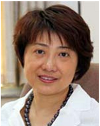
Biography:
Dr. Xiao Zhang has completed his PhD from Shanghai Jiao Tong University School of Medicine and postdoctoral studies from University of Western Ontario. She is the director of department of Rheumatology,Guangdong General Hospital. She is the first vice president of the Chinese medical doctor association branch of rheumatism.She has been serving as an editorial board member of Chinese journal of rheumatism, Chinese medical journal , Chinese journal of clinical immunology and allergy, Chinese journal of bone and joint, journal of evidence-based medicine,et al.
Abstract:
Objective To explore the possible diagnostic and imageology type values of the serum KL-6 level for InterstitialLung Disease (ILD) associated with Connective Tissue Diseases(CTD).Methods 75 CTD patients divided into two groups , CTD with ILD group(44) and CTD without ILD group(31). Determination of serum KL-6 concentration in 75 CTD patients by Enzyme-Linked Immuno Sorbent Assay(ELISA). To compare the serum levels of KL-6 between the groups. Results The serum levels of KL-6 in the CTD with ILD were significantly higher than those CTD without ILD(P<0.001).500U/ml as the normal ELISA cutoff level for serum KL-6.Sensitivity,specificity,positive and negative predictive values of serum KL-6 level for CTD-ILD were72.7%,87.1%,88.9%,69.2% ,respectively. There are no significant difference of serum KL-6 levels between the different imageology types:Usual Interstitial Pneumonia(UIP), Nonspecific Interstitial Pneumonia(NSIP)and indeterminate(P=0.84). The serum levels of KL-6 in the group of wide lung lesions were significantly higher than those in the group of narrow lung lesions (P<0.001).The mean serum KL-6 level of patients with active ILD was significantly higher than that of patients with inactive ILD (P<0.001). Conclusion Serum KL-6 leves are a useful marker for diagnosis and evaluation of the extent of lung lesions and disease activity of CTD-ILD.
Debabrata Chowdhury
Indian Institute of Chemical Technology, India
Title: Insights into the role of a newly identified plausible biomarker of cardiac hypertrophy

Biography:
Debabrata Chowdhury is a research scholar presently pursuing his Ph.D degree in Biotechnology under the supervision of Dr. Manika Pal Bhadra from Centre for Chemical Biology, CSIR-IICT, Hyderabad (Registered with JNTU, Hyderabad). He has done his M.Sc in Microbiology from Vidyasagar University, West Bengal. His research interests lie in understanding molecular mechanism and diagnostic markers of cardiac hypertrophy by applying molecular biology techniques coupled with proteomics. He has already published total 4 papers in reputed international journals and one more manuscript related with this work has been communicated in an international journal
Abstract:
Cardiac hypertrophy leading to heart failure is one of the major causes of morbidity and mortality in the world. It is characterized by a chronic physiological increase in cardiac muscle mass resulting from systolic or diastolic wall stress. It can be induced in rats by administration of isoproterenol (ISO), a catecholamine. Therefore, in our recent study we used a proteomics based approach (two dimensional electrophoresis followed by MALDI-TOF MS/MS analysis) a) to analyze and contrast the proteome of the healthy and ISO induced hypertrophy in male Sprague Dawley rats and b) to identify potential biomarkers for diagnosis of cardiac hypertrophy. The above study resulted in the identification of different proteins of major functional groups such as cholesterol and protein metabolism, muscle contraction and development, transport, TCA cycle, ATP-biosynthesis, chaperone, signal transduction, DNA synthesis and ubiquitinisation. We were also able to identify and study differentially expressed proteins in the diseased sample which revealed that prohibitin (PHB) differentially expressed protein which is mainly associated with cardiac muscle growth and development. The present aim of the study is therefore to investigate the function of this protein at molecular level to understand and elucidate its direct or indirect involvement in cardiac disease progression or cardio protection. Nevertheless, the findings from the present study we observed that this protein is mainly involved in ROS signaling pathway and cardio protective effect in in-vitro and could be useful to predict the therapeutic response to establish novel therapies for the prophylaxis of cardiac hypertrophy and subsequent heart failure in cardiac patients.
Xiaoying Wang
Southeast University, China
Title: Strengthening antitumor efficacy of B16F10/GPI-IL-21 vaccine by combining TGF-β1 knockdown and miR200c injection in mouse model
Biography:
Xiaoying Wang is working as an associate professor at the Massachusetts General Hospital.
Abstract:
TGF-β1 secreted abundantly by tumors cells as well as present in the local microenvironment promotes neoplasm invasion and metastasis by triggering the Epithelial to Mesenchymal Transition (EMT). MiR200c has been shown to suppress EMT and to regulate the cellular epithelial and interstitial state conversion, whereas the tumor vaccines are intended to specifically initiate or amplify a host response against evolving tumor cells. Our study aimed at optimizing the antitumor effects of the B16F10/glycosylphosphatidylinositol-interleukin 21 (B16F10/GPI-IL-21) tumor vaccine on melanoma bearing mice by combining the TGF-β1 knockdown and the administration of miR200c agomir. The mice were subcutaneously vaccinated with inactivated B16F10/GPI-IL-21 vaccine and challenged by B16F10 cells transfected with shTGF-β1 (B16F10/shTGF-β1 cells) or B16F10/shTGF-β1 cells with the administration of miR200c agomir. The later combination showed that, when compared with the mice in the control group that received no vaccination, vaccinated mice significantly increased NK and CTL activities, enhanced levels of IFN-ï§, and reduced expression of TGF-β1, N-cadherin, Vimentin, Gli1/2, P-Smad2/3 and others involved in promoting expression of EMT-related molecules in tumor areas, and inhibited the melanoma metastasis in lungs and lymph nodes. Altogether, our findings demonstrate that this synergistic anti-cancer regimen effectively induces strong immune response and diminishes the melanoma progression.
Xiang Zhang
Xijing Hospital,China
Title: Targeted therapeutic effect and significance of the malignant gliomas
Biography:
Abstract:
Malignant Glioma (MG) is the most common and extremely fatal type of primary intracranial tumor. The fundamental problem with this tumor occurs primarily due to neoplasm cells’ highly infiltrative nature and involves critical areas of the brain, making it almost impossible to get a complete surgical resection, and an intrinsic or acquired resistance to radio-or chemo-therapy. Recent studies demonstrated that tumor recurred within 2 to 3 cm of the original site of tumor resection in the majority of cases. Furthermore, the blood-brain barrier (BBB) profoundly limited the access of many systemically administered chemotherapeutics to the tumor. Standard treatment for patients with MG usually entails surgery followed by radiotherapy plus chemotherapy. Despite remarkable advances in current therapies including molecular and cellular biology, these patients still face a poor prognosis, pointing towards a stringent need for new therapeutic patterns. Therefore, targeting therapy using local drug delivery for MG becomes a priority for the development of novel therapeutic strategies. The main objectives to the effective use of chemotherapy for MG include the drug delivery to the tumor region and the infusion of chemotherapeutic agents into the vascular supply of a tumor directly, which could improve the pharmacokinetic profile by enhancing drug delivery to the neoplasm tissue. Herein, we reviewed critically the existing and promising targeting therapies using local drug delivery for MG which could effectively inhibit tumor invasion, proliferation and recurrence of MG to combat the deadly disease. Undoubtedly, novel chemical medicines targeting these MG may represent one of the most important directions in the Neuro-oncology
Yalin Song
West China School of Medicine, China
Title: Prognostic role of D-dimer in patients with lung cancer: A Meta-analysis
Biography:
Yanlin Song is a MD candidate in West China School of Medicine, Sichuan University. She has been studying cancer therapy for nearly 1 year, and has published 2 papers.
Abstract:
D-dimer detection in patients suffering from a variety of different types of cancer has become a hot point as an emerging and promising biomarker. In this study, therefore, we evaluated the prognostic role of D-dimer in lung cancer. MATERIALS AND METHODS: Initial literature was identified using PubMed, EMBASE and CNKI. The primary data was Hazard Ratio (HR) with 95% Confidence Interval (CI) of survival outcomes in candidate articles, including Overall Survival (OS) and Disease-Free Survival (DFS). RESULTS: Finally, 11 eligible studies were included in this meta-analysis, which were published between 1996 and 2013. The estimated pooled HR and 95%CI for OS of all studies was 2.06 (95%CI 1.64-2.58, p<0.00001) and the HR and 95%CI for DFS in one study was 3.38 (95% CI 1.17-9.75, p=0.002). The HRs and 95%CIs for OS in Asian and non-Asian patients were 2.48 (95%CI 1.60-3.84, p<0.0001) and 1.89 (95%CI 1.44-2.47, p<0.00001), respectively. When we further analyzed the data by various detecting methods, the pooled HR and 95%CI for OS was 3.22 (95%CI 1.99-5.21, p<0.00001) for ELISA, 1.52 (95%CI 1.25-1.86, p<0.0001) for Latex assay and 1.79 (95%CI 1.19-2.69, p=0.005) for immunoturbidimetry assay. We also did subgroup analysis according to the ratio of histological type and clinical stage. All above analysis had positive results. CONCLUSION: This meta-analysis showed that D-dimer had a fine predictive role in lung cancer patients, especially in Asian group. Also, it demonstrated that D-dimer had a stronger predictive value using the method ELISA.



